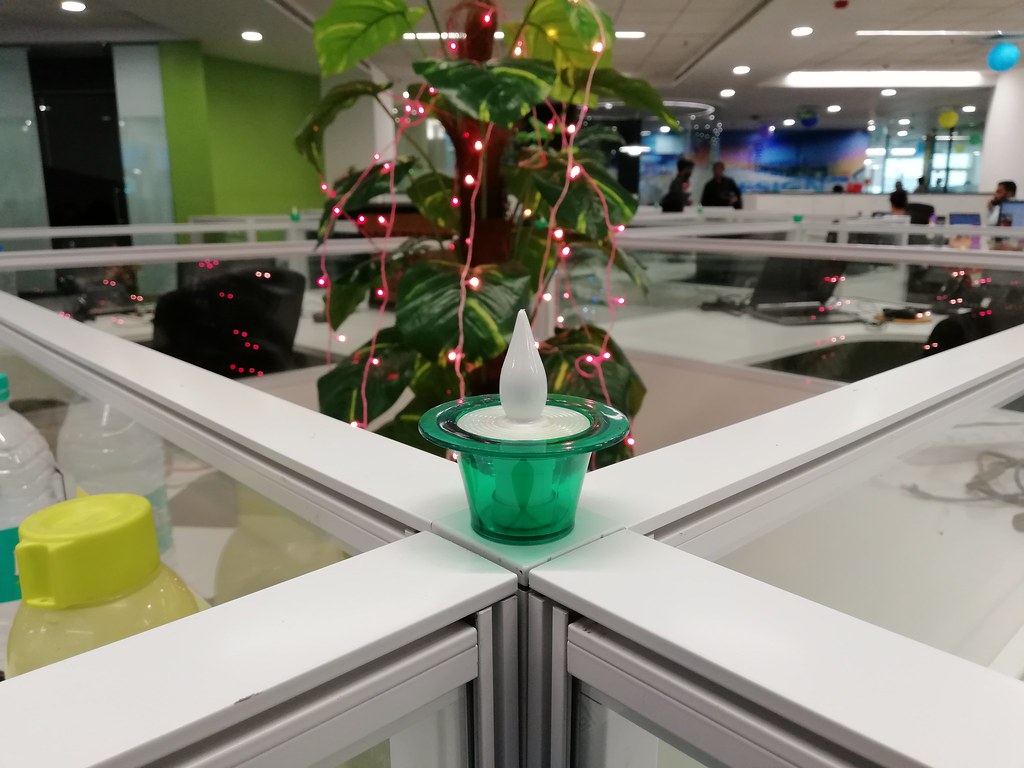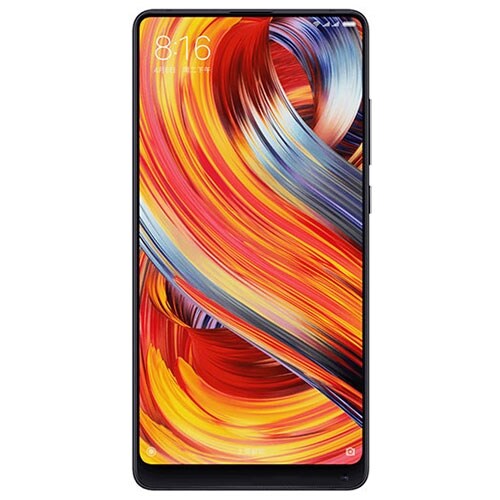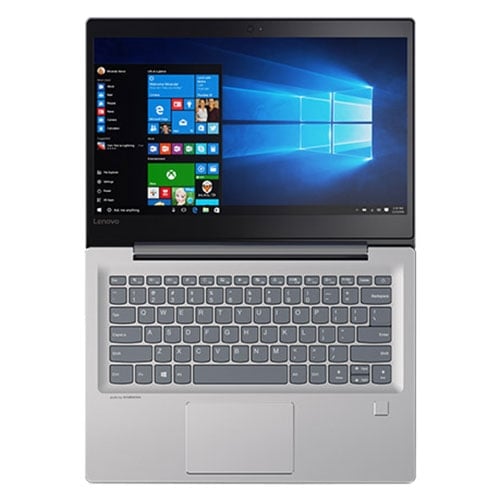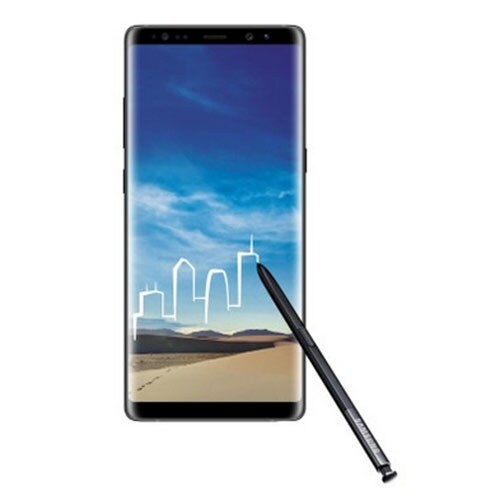Selfie smartphones, a trend that started not too long ago by smartphone brands like Oppo and Vivo and even picked up by manufacturers like HTC, seems to be losing steam these days. Buyers do need great selfies cameras, but rarely do they need a smartphone that is better at taking selfies than it is at taking images with the rear primary camera.

Meet the Huawei Honor 9i
While Oppo and Vivo still believe that a market for selfie-centric smartphone exists (and even Asus, to an extent) there are others like Huawei, which believe that a smartphone needs to be an all-rounder and have a great selfie camera as a bonus.
About two weeks ago, Huawei’s sub-brand Honor announced a new smartphone, one that arrived with not just with a dual-camera setup at the back, but one on the front as well.
The Huawei Honor 9i packed in not the usual three, but a total of four cameras. This lets it click selfies with an enhanced depth of field using both the front and the rear facing cameras. But this phone is not just about selfies or the portrait mode, as the device packs in plenty more. Is this enough to make it a capable all-rounder in the mid-range selfie smartphone segment?
Build and Design: 8/10
I liked the design of the Huawei Honor 8 Pro that I reviewed a few months ago. And with the Honor 9i, Huawei seems to have kept up with those standards in quality.

The 18:9 FHD+ display is really good, save for some brightness issues when viewed off axis
While the Huawei Honor 9i resembles a device from the Honor family, it looks well-finished and feels premium.
The device has a smooth, matte finish over the back, while the front is a glossy black thanks to the 2.5D glass screen that disappears seamlessly into the metal unibody. While the 2.5D curved glass truly is curved, Huawei has also included a curved lipping between the glass and the metal frame, one that most will miss because of its polished, glossy black appearance. The result is a premium-looking device, one that many mistook for a flagship smartphone.

The smooth matte finish has a soft feel, but gathers fingerprints in an instant.
Moving to the back, there are two antenna bands that seem to blend well with the black finish of the handset we received for review. The placement of the single LED flash seems odd and sits above the dual camera module that protrudes by about two millimetres from the rest of the flat back. Even the ring that holds together and protects the camera’s glass cover is well finished. Below it sits the cut-out for the fingerprint reader.

The fingerprint reader sits at the back.
Despite the many positives of the design and quality of the construction, there is one annoying negative. The smooth metal back is a fingerprint magnet. It captures handprints, fingerprints and smudges very quickly whether you have sweaty or dry hands in hot and humid Mumbai. Wiping those smudges off was not an easy task either. After trying to keep the phone clean and smudge-free for a few days, I eventually gave up.
Features: 8/10
The Huawei Honor 9i may attract camera smartphone buyers because of its quad-camera setup, but there is a lot more on offer here, at least on paper.
You get a 5.9-inch Full HD+ LCD display in an 18:9 ratio sporting a resolution of 1,080x2,160 pixels. Inside sits a Huawei-made HiSilicon Kirin 659 chipset that is clocked at 2.36 GHz and is paired with 4 GB RAM and 64 GB of internal storage (expandable up to 128 GB using a microSD card).

Spec-wise, everything out here is top notch for its segment and pricing.
The camera department consists of two dual-camera setups. The primary camera setup consists of a 16 MP rear camera and a 2 MP secondary rear camera that helps with the ‘bokeh’ mode. On the front, you have a 13 MP camera and a secondary 2 MP camera again to help deliver the ‘bokeh’ effect, but this time for selfies. There’s a single LED flash at the front and the rear.
Connectivity options include support for 4G+, 4G, 3G and 2G bands. There’s Wi-Fi 802.11 a/b/g/n (2.5/5G Wi-Fi), GPS/AGPS, GLONASS, Wi-Fi Direct, microUSB v2.0, dual SIM slots and USB OTG support. What it lacks is NFC.
Lastly, there’s a 3,400 mAh battery, which seems large enough for a device of this size, but sadly, skips on any fast charging tech.
Display: 7.5/10
Given the handset’s taller build and the fact that it’s comfortable to hold, I kept forgetting that I was holding a smartphone with a 5.9-inch display.
The Full HD+ LCD display has no rounded corners like most of the taller ones we have seen in the sub Rs 25,000 segment, but it is not an issue when you consider the smartphone’s price.
With that said, the bezels around the display are thin, but this is not a bezel-less device in appearance. It is, however, practical because it manages to fit in a larger display in a smaller footprint. But as with every smartphone, it does come with a few compromises.

It's a great display with a few minor issues.
The Full HD+ resolution, makes it sharp and I could spot no stray pixels or text with jagged edges despite setting the display to the smallest scale (or viewing mode) available. When held up front, the whites looked pleasant and did not showcase odd colour tones. The colour saturation was well under control with no visible gradients whatsoever. This display may not have colours that pop like an AMOLED unit, but is closer to the natural tone, which is something I personally prefer.
Problems begin to show up when you place it on a table as the brightness levels decrease drastically with steeper viewing angles. The colours don’t shift with the viewing angles, so this is more about the way the display is set up with the glass screen above it, than the display itself.
Then, you have the reflective glass, which, combined with the slightly low brightness levels, makes it a bit difficult to read and view content in direct sunlight. I had no complaints about brightness levels indoors as they seemed sufficient.
Software: 8/10
It’s 2017, and as it has always been with any non-Pixel device, the Honor 9i too was launched without Android 8.0 Oreo. The device features Android 7.1 Nougat with Huawei’s EMUI 5.1 software layer above it to keep things refreshed.

The software on board is typically Huawei, but feels fluid and fast.
Despite its shortcomings, when compared to a stock Android experience, which comes with app shortcuts and more, EMUI has plenty of customisation options. The software as we first saw with the Huawei Honor 8 Pro, seems to run a lot smoother and feels lighter overall, whether you are just swiping through long lists in third-party apps or multi-tasking in the Recents menu. It may not be as fluid as the Honor 8 Pro or a OnePlus 5, but it comes quite close and that is a good thing, considering its Rs 17,999 price tag.
As for the apps, they scale well with the taller 18:9 display ratio. EMUI also prompted me with an option to expand an app to fit the taller display, which could be done with a single tap. The prompts only appeared when I opened the third-party app for the first time.
Performance: 8/10
With a custom Huawei HiSilicon Kirin 659 chipset inside, there’s little to be worried about when it came to performance. The Kirin 659 SoC packs in 4x Cortex A53 cores @ 2.36 GHz + 4x Cortex A53 cores @ 1.7 GHz along with the Mali-T830 MP2 GPU. The chipset is clocked a tad bit higher than Qualcomm’s Snapdragon 625 offering, but falls a bit short when it comes to the 653 chipset thanks to the latter's more powerful, Cortex A73 cores.
What this translates to is a great, class-leading gaming experience at its price tag. The Honor 9i ran almost all games at the highest resolution but with the effects and textures set to mid. Asphalt 8 Xtreme ran smoothly with screen density cranked up to HDPI and visual quality turned to Optimal, which was pretty impressive. In short, this smartphone should be able to take on most graphic intensive games available today without breaking into a sweat. The smartphone’s heat levels did not see a big jump either, with a minor rise in temperature.

Gaming performance was up to the mark.
Audio quality through the headphones was pretty good, with audio tilting more towards the treble than the bass notes. Through the speaker, it was really loud, loud enough to place a call in the middle of traffic, but it did sound a bit tinny, so it wasn’t all that pleasing despite its loud volume. Call quality was a bit low as I needed to max out the receiver’s speaker volume to the max very frequently. The voice quality was clear and both callers did not face any problems at either end.
Camera: 7.5/10
Unlike anything we have seen in the past, the Honor 9i packs in a total of 4 cameras, which helps it click not just the usual selfies, but selfies and portrait shots with the bokeh or wide aperture effect. Both, the front and rear facing cameras, feature a secondary 2 MP sensors that help with the depth data needed for the software to produce the necessary bokeh effect.

The Honor 9i features dual cameras not just at the back but on the front as well.
As for the camera interface, there are two modes provided in the camera interface and this depends on the camera that you have selected to click a picture. The 9i provides a ‘Wide aperture mode’ that lets you click images with a shallow depth of field. Huawei recommends using this mode to click images of objects or people within 2 metres.
The second mode is what Huawei calls the ‘Portrait mode’, one that works best with subjects placed between 0.5 to 2 metres. What this mode also gets you is Beauty and Bokeh effects, the Beauty mode has a button in the camera interface that lets you adjust your “beauty level”.
While Wide aperture and Portrait modes are available for the rear camera, the front-facing camera can only pull off the Portrait mode.
To be honest, there’s not much of difference between the two modes, it’s just that Portrait mode gets you the Beauty effects, which will clean up your face without the need for any makeup. The camera stores depth data while shooting in both modes and both cameras, so they can be tweaked by tapping the shutter icon when scrolling through the gallery. This is a rarity for smartphones in this range. Tweaking basically involves changing the aperture levels and adding a filter, after which you can tap on the save icon, located at the top of the screen, to save a copy of your altered image.
With that said, the images produced by the Honor 9i’s rear facing, primary dual cameras are pretty good. There’s quite a bit of detail in the images I captured be it landscapes or portraits. Macro shots came out very clear and crisp with or without the Wide aperture mode with the Bokeh effect enabled.

Dual cameras on the front.
The colours looked natural but did appear a bit washed out with the standard setting, but these can be altered to your liking if you head into the camera app’s settings.
As for the negatives, the images produced when not using the Portrait or Wide aperture mode did look a bit dull. Whether its photo of the street in the bright afternoon sunlight or in low light or a red keychain, the camera would strangely drop the ISO or shrink the aperture, like it was given set instructions to click dull photos. As for the feathering using the wide aperture mode, it was a bit spotty in scenes, at times I had things growing out of the subject’s shirt, or objects (the green lamp in the photo album).
Then there’s the camera’s average low light performance, which resulted in blotchy textures and almost unusable images in dimly lit scenarios. Night landscapes were below average.
Moving to the front-facing camera, the results were equally good. This is rare, as most smartphones either give importance to the front or rear camera.
As you can see from the Flickr gallery embedded above, we had quite a bit of fun, playing around with the Portrait mode. It clicked great selfies in low light or bright lighting keeping both the subject and the background well exposed.
As for the videos, the phone maxed out at 1,080p video recording for both the front and the rear camera with average results.
Battery Life: 8/10
With Huawei’s custom Kirin 659 SoC inside, I expected the battery life to be great and so the Honor 9i delivered. The smartphone easily ran for over a day, and this includes clicking the many photos you see in the Flickr album. Along with this, I had the usual three email accounts on sync and plenty of messaging and some calls.

While battery life tests tell a different story, the 9i was above average in day to day usage.
Our standard PC Mark Work 2.0 Battery Life test gave 7 hours and 44 minutes, but in day to day usage, it last well-over a typical workday. Seems like Huawei’s choice of sticking to a Full HD+ display, a 3,400 mAh battery and a Kirin 659’s 16 nm manufacturing process paid off.
Verdict and Price in India
At Rs 17,999, the Huawei Honor 9i is a steal of a deal. It not only offers plenty on paper, but also delivers when all of that hardware is combined with well-designed software. While the low light camera is messed up, it makes up for it with some high-quality selfies that deliver quality on par or even a tad bit better than the stuff I have seen from Vivo and Oppo in the past year.
More importantly, with the Honor 9i comes quite close to being an all-rounder that goes big on build quality. A good rear camera and an equally good front-facing camera with a portrait mode and wide aperture mode are an added bonus.

The top dog until the Oppo F5 arrives.
The Mi Max 2 at Rs 16,999 offers a better camera, minus the portrait modes, but you have to deal with a massive device and the weight that comes along with it, and a not so great selfie camera. So if you are OK with the weight, the awesome battery life and the cameras, then the Mi Max 2 is a better buy.
As far as selfie-smartphones go, buy an Oppo F3 Plus (available at Rs 24,990) only if you need the bigger display, better battery and better photos. We have yet to receive the Oppo F5 review unit, so going by its specifications on paper, the F5 should be able to compete with the Honor 9i. Its only downside even at Rs 19,990 is that it features a plastic body, but the construction appears to be fine so most users may not notice this over the faux-metal look. Apart from the plastic body, there is no dual camera setup in sight, which could be a deal breaker for some.
As for everything else, the Honor 9i pretty much slays the competition (Vivo V7+, the Moto G5s Plus, the Oppo F3 and even the Asus Zenfone 4 Pro Selfie Pro) at the lower end with its street-smart skill set.
Specifications
The Honor 9i (64GB, 4GB RAM) features a 5.9-inch IPS FHD+ display with a resolution of 2160 x 1080 pixels and is powered by a 2.36GHz + 1.7GHz octa core processor and has 4GB of RAM. It comes with 64GB of inbuilt storage, expandable upto 128GB and has a 16MP + 2MP-megapixel rear camera and 13MP + 2MP-megapixel front camera. It comes with Android 7.0 (Nougat) + EMUI 5.1 OS and support a 3340mAh battery capacity with 3G & 4G.
Display
| Screen Type | IPS FHD+ Capacitive Touchscreen |
|---|
| Screen Size | 5.9 inches |
|---|
| Screen Resolution | 2160 x 1080 |
|---|
Processor
| Processor | Octa Core |
|---|
| Speed | 2.36GHz + 1.7GHz |
|---|
Memory
| Internal Memory | 64GB, 4GB RAM |
|---|
| Extendable Memory | 128GB |
|---|
Camera Features
| Sensor Resolution | 16MP + 2MP |
|---|
| Front facing camera | 13MP + 2MP |
|---|
General Features
| OS | Android 7.0 Nougat + EMUI 5.1 |
|---|
| Bluetooth Features | v4.1 with A2DP, EDR, BLE |
|---|
| Dual Sim Support | Yes |
|---|
| Messaging | SMS, MMS, Email |
|---|
| GPS | Yes, with A-GPS, GLONASS |
|---|
| USB Connector | Yes |
|---|
| Available Colours | Prestige Gold, Graphite Black, Aurora Blue |
|---|
Carrier Networks
| 2G | GSM 850/900/1800/1900 MHz |
|---|
| 3G | WCDMA 2100 MHz |
|---|
| 4G | Yes |
|---|
Data
| WiFi | 802.11b/g/n (2.4GHz) |
|---|
Body
| Dimensions | 75.2 x 7.5 x 156.2 mm |
|---|
| Weight | 164 grams |
|---|
Sound
| Media Player | Yes |
|---|
| Speakerphone | Yes |
|---|
| Audio connector | 3.5mm |
|---|
Battery
| Type | Li-Ion |
|---|
| Capacity | 3340 mAh |
|---|
After Sales Service
| Warranty Period | 1 Year |
|---|
Price
| Warranty Period | 1 Year |
|---|
Published Date: Nov 06, 2017 07:32 am | Updated Date: Nov 06, 2017 07:32 am























